Solid Slab or Tile Backsplash: Which Design Will Look Best in Your Kitchen?
Until you remodel, it may not cross your mind just how many small architectural features, design elements and individual components contribute toward endowing your kitchen with its unique character.
However, when the time comes to develop a design plan for your project, it’s important to carefully consider each aspect of your kitchen and how it fits into the style and function of the space. Take, for example, your kitchen backsplash.
Whether incorporated near your sink, stovetop oven range, or another portion of the wall, this kitchen component plays a practical role in addition to being a key decorative element. If you plan to add a new backsplash or replace your existing one when remodeling your Seattle kitchen, select a material that is durable, easy to maintain, and appropriate for your overall design style.
Kitchen Backsplash Ideas for Remodeling
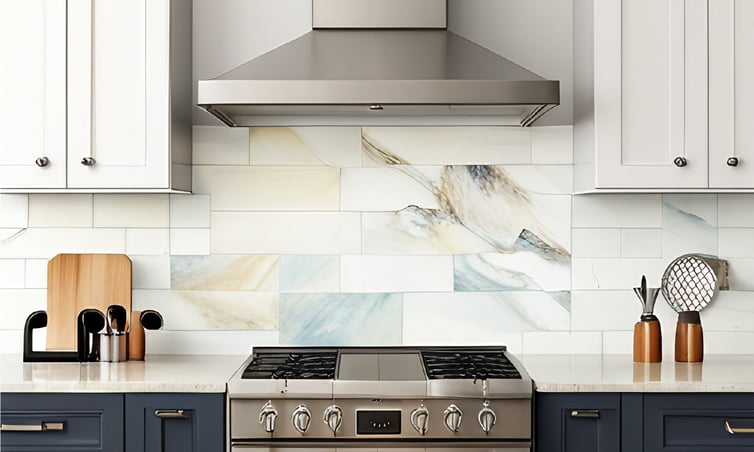
There are several ways—traditional and quirky—to add a backsplash to your kitchen in Seattle. Some use brick, stainless steel, chalkboard paint, stick-on-tiles, or wood. However, most kitchen backsplash designs fall into two categories: solid slab or tile. This is because these options are superior in durability, which a backsplash often needs. Both are viable options for your custom remodeling project. As they have distinct pros and cons, the optimal choice depends primarily on your personal priorities and the look you have in mind for your kitchen refresh.
See also: Top 7 Design Trends for Kitchen Remodeling in Seattle
Pros and Cons of Tile Backsplash
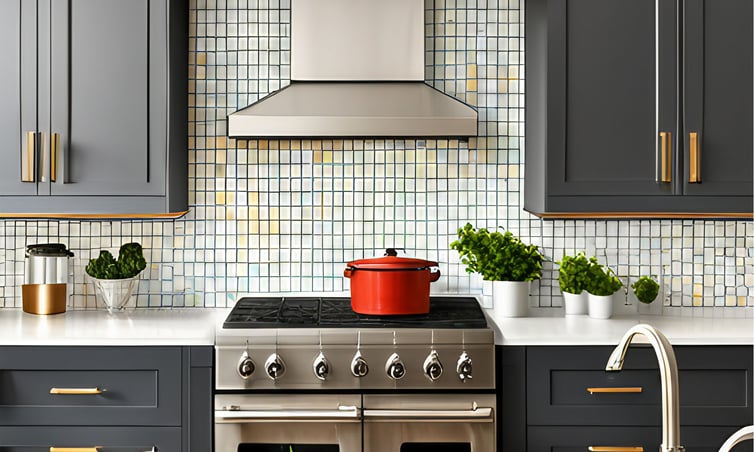
Tilework is generally considered the most traditional approach for kitchen backsplash design. There is a wide variety of materials, sizes, shapes, colors, and textures you can choose for your tilework, empowering you to put your own creative stamp on the space. The most popular tile backsplash materials include ceramic, porcelain, or glass.
Porcelain and ceramic tiles are relatively easy to clean and resistant to heat, scratches, and water damage. If one tile gets chipped or cracked, you can replace it without redoing the entire backsplash. You can also find ceramic and porcelain tiles designed to mimic wood or stone, enabling you to achieve a desirable, upscale look without dealing with the performance challenges associated with those materials. You have the ability to strongly influence your design style via the color and shape of the tiles you choose, as well as the distinctive pattern you create on your wall.
If you decide to go with ceramic tile for your kitchen backsplash, you can’t forget about the grout binding the units together. It tends to get grimy and discolored over time unless you make an effort to keep it in pristine condition. Lighter-colored grouts are best suited for modern, low-use kitchens, while dark grout could help ease the burden of meticulous cleaning and maintenance in a high-traffic family kitchen.
See also: 10 Questions to Help Get Started with a Kitchen Remodel
Pros and Cons of Solid Slab Backsplash
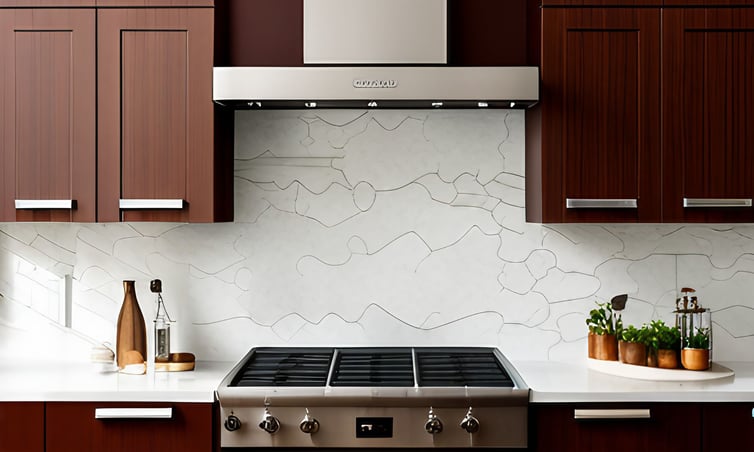
A solid slab backsplash is simply constructed using a large, continuous slab of natural or engineered stone, which includes marble, granite, and quartz, to name a few. The clean, uninterrupted surface creates a visual effect that is quite distinct from the traditional tile backsplash. For a bold, cohesive kitchen design, you can even use a matching material for the backsplash and your countertops.
Solid slab backsplashes pair well with modern kitchen designs, offering an attractive balance of luxe material and minimalist aesthetics. These vertical stone treatments, available in various colors and vein patterns, create a striking visual impact. Cut to fit any area, they can serve as a backsplash around the sink, or the oven extends to cover larger surfaces, or even reach up to the ceiling for a bold statement. Like countertops, the choice of stone or engineered material for your backsplash should consider factors such as durability, porosity, and ease of maintenance. For instance, granite requires regular sealing, quartz offers durability, and marble, although susceptible to scratches, adds artistic appeal. Despite the higher cost and complex installation process, which is best left to professionals, solid slab backsplashes offer a high-end aesthetic, classic elegance, and a worthwhile investment.
Choosing a Design-Build Remodeler in Seattle
Remodeling your Seattle kitchen is an effective way to bring the space up to date with your current style preferences and the needs of your family. When you partner with Innovative Home Renovations for your Seattle kitchen remodel, our interior designer will help you confidently make selections that you are likely to appreciate and enjoy for years to come, so contact us today.



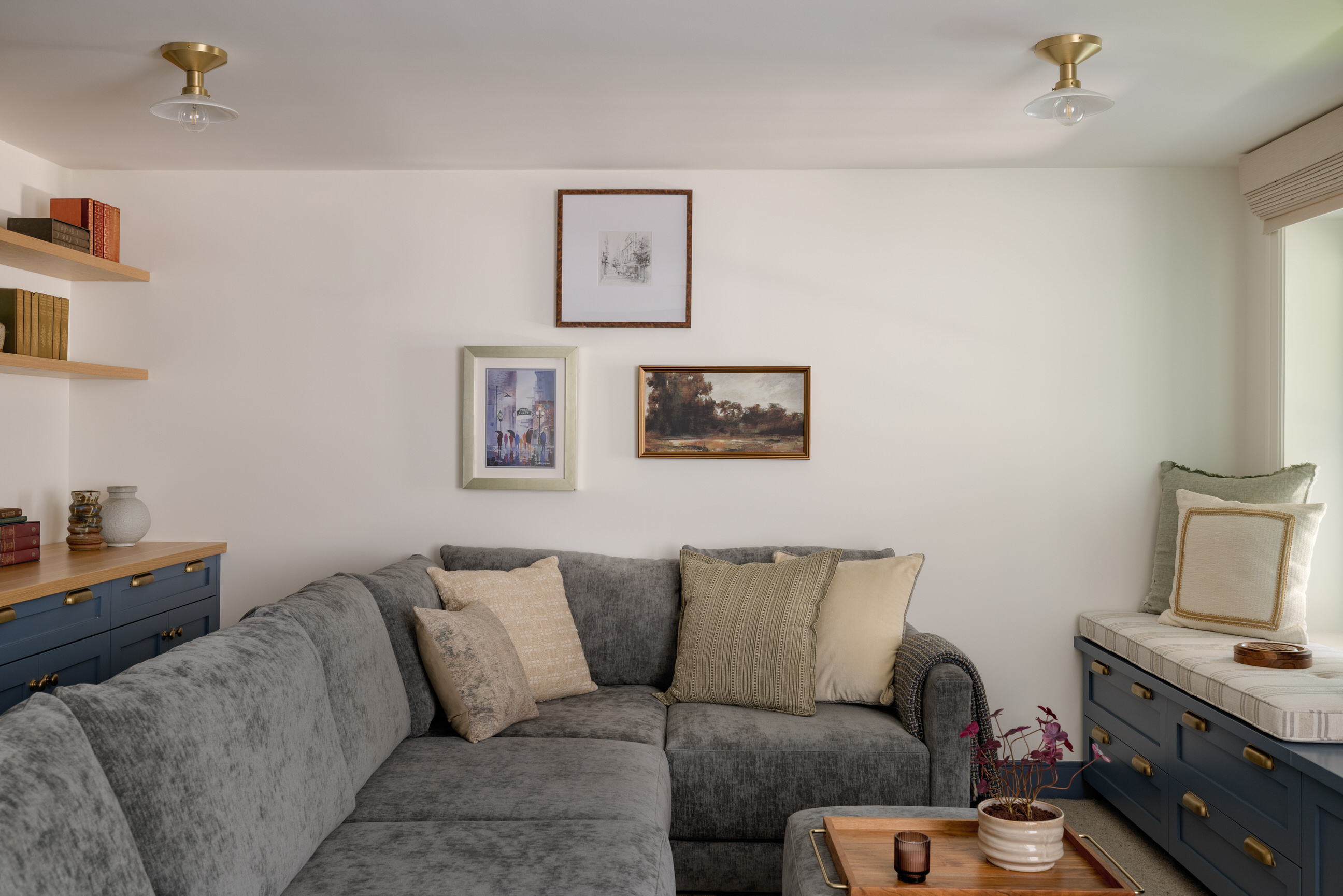
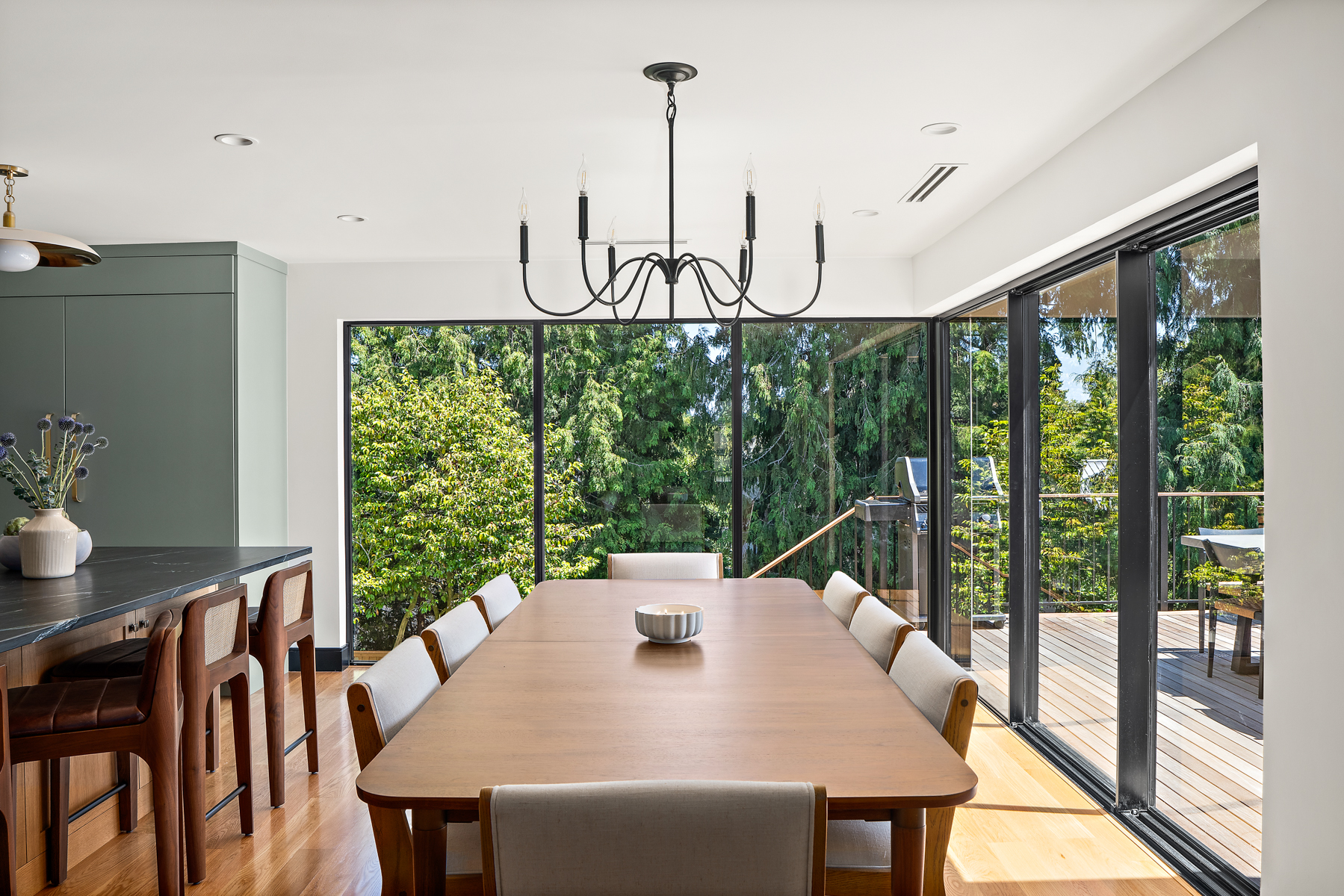
by Bennett Bottorff